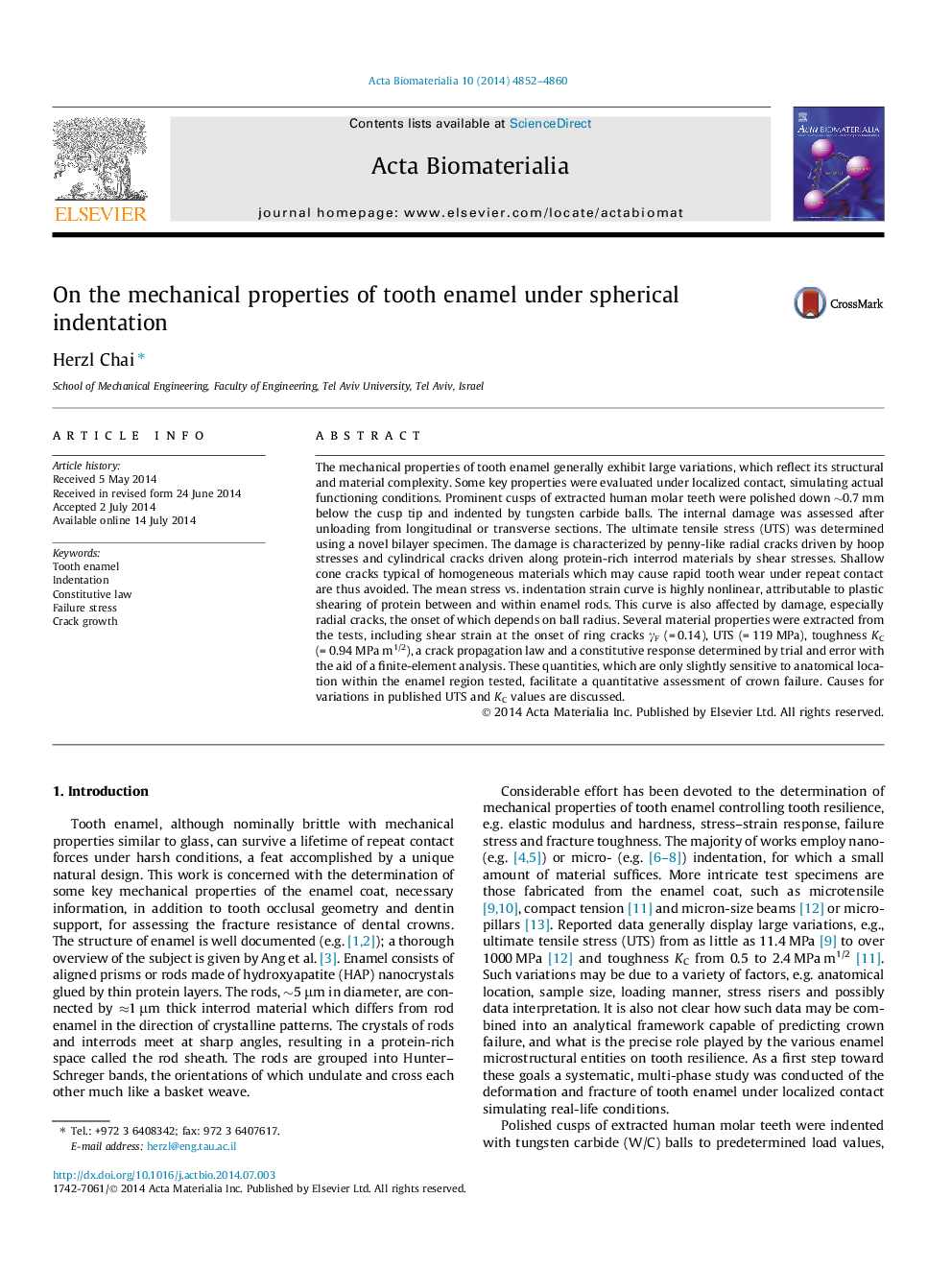| Article ID | Journal | Published Year | Pages | File Type |
|---|---|---|---|---|
| 10159066 | Acta Biomaterialia | 2014 | 9 Pages |
Abstract
The mechanical properties of tooth enamel generally exhibit large variations, which reflect its structural and material complexity. Some key properties were evaluated under localized contact, simulating actual functioning conditions. Prominent cusps of extracted human molar teeth were polished down â¼0.7 mm below the cusp tip and indented by tungsten carbide balls. The internal damage was assessed after unloading from longitudinal or transverse sections. The ultimate tensile stress (UTS) was determined using a novel bilayer specimen. The damage is characterized by penny-like radial cracks driven by hoop stresses and cylindrical cracks driven along protein-rich interrod materials by shear stresses. Shallow cone cracks typical of homogeneous materials which may cause rapid tooth wear under repeat contact are thus avoided. The mean stress vs. indentation strain curve is highly nonlinear, attributable to plastic shearing of protein between and within enamel rods. This curve is also affected by damage, especially radial cracks, the onset of which depends on ball radius. Several material properties were extracted from the tests, including shear strain at the onset of ring cracks γF (= 0.14), UTS (= 119 MPa), toughness KC (= 0.94 MPa m1/2), a crack propagation law and a constitutive response determined by trial and error with the aid of a finite-element analysis. These quantities, which are only slightly sensitive to anatomical location within the enamel region tested, facilitate a quantitative assessment of crown failure. Causes for variations in published UTS and KC values are discussed.
Related Topics
Physical Sciences and Engineering
Chemical Engineering
Bioengineering
Authors
Herzl Chai,
